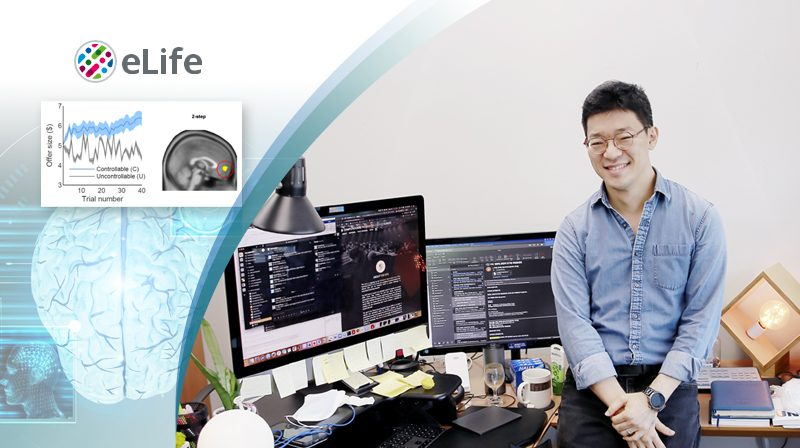A research team, affiliated with UNIST recently published a study that looked at how people exploit the controllability of their social environment. To understand how a sense of control over others may influence the brain’s decision-making processes, the research team tested the ability of healthy human subjects to play strategic games, such as bargaining.
Published in the November 2021 issue of eLife, this study has been carried out by Professor Dongil Chung in the Department of Biomedical Engineering at UNIST, in collaboration with Professor Xiaosi Gu and Dr. Soojung Na at the Icahn School of Medicine at Mount Sinai, New York, United States.
In this study, research team found that people used forward thinking when trying to influence others, for the first time. Their findings also showed that forward thinking happened regardless of whether the subjects could actually influence others and appeared to be driven by neural activity in a well-known decision-making center of the brain.
Several previous studies have shown that the controllability of our social environment has a profound impact on our behavior and mental health. Nevertheless, neurocomputational mechanisms underlying social controllability remain elusive, noted the research team.
To investigate further, 48 participants were recruited. These participants performed a task where their current choices either did (Controllable), or did not (Uncontrollable), influence partners’ future proposals. Computational modeling revealed that people engaged a mental model of forward thinking to estimate social controllability in both Controllable and Uncontrollable conditions. They played different versions of the ultimatum game, a well-known bargaining exercise in which the subjects were asked to split $20 with an opposing team. Initial offers always started at $5. In one, “controllable,” version of the game the rules were predictable. If the subject accepted the $5 then the next offer would be one or two dollars lower. Conversely, a rejection of the $5 led to raising the subsequent offer by the same amounts. For the second, “uncontrollable,” version of the game, a subject’s initial decision had no effect on the following offers. Instead they were chosen randomly and were thus unpredictable. Each subject played 40 rounds, alternating between the two different versions.
Their findings showed that there were differences between how the subjects responded to the games, which suggested that they perceived and exploited the advantages posed by the predictable version. Most notably, they received higher offers, took longer to decide, and felt a greater sense of control when playing the predictable version.
The participants reported a sense of control during the unpredictable game that was much higher—around 40 percent—than reality, which was zero chance of control. Moreover, in one subset of experiments, the subjects played the games against a computer instead of teams. Here the participants felt about 60 percent in control of the game regardless of which version they played and despite the fact that they received higher offers in the predictable version.
Nonetheless, computational modeling experiments suggested that in every situation tested—predictable vs unpredictable and team vs computer—the subjects consistently used forward thinking to play the game. In other words, a computer algorithm which tested out whether a subject would think two, three, or four steps ahead before deciding on an offer recreated the initial results better than one that assumed the subjects just reacted or thought only one step ahead.
These findings were strengthened by the results of an online version of the initial experiments that was played by 1,342 participants. Again, the results showed that the predictable version of the game produced higher offers and a greater sense of control then the unpredictable one even though the simulation suggested that forward thinking was used for both.
Finally, the results of the brain scans suggested that these choices were being driven by neural activity in the ventromedial prefrontal cortex, a decision-making center known to be involved in forward thinking. For instance, the two-step forward thinking computer simulation helped explain the changes in this area of the brain better than other simulations or when applied to other brain regions.
Journal Reference
Na, S., Chung, D, et al., “Humans Use Forward Thinking to Exploit Social Controllability,” eLife, (2021).













Pingback: New Study Unveils Humans Use Forward Thinking to Exploit Social Controllability – UNIST BME()
Pingback: New Study Unveils Humans Use Forward Thinking to Exploit Social Controllability — dup – UNIST BME()